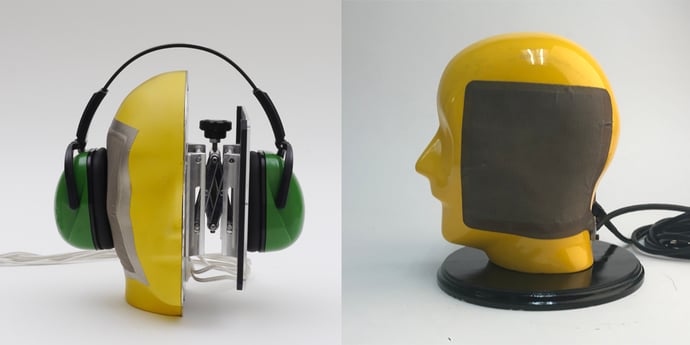Pressure is a key consideration for any product that requires either prolonged body contact or contact with a particularly sensitive part of the body. Integrating capacitive tactile pressure sensors into the testing and development process, however, can help ensure that such products won’t cause pain, injury, or agitation for the user.
Ask the average man on the street to identify the most important aspect of designing a sleep apnea mask, and he might suggest function or reliability. Ask a patient who actually has to wear a sleep apnea mask, however, and she’s likely to cite an equally significant factor that might not be quite as obvious:
comfort.
Designing better CPAP masks with Tactile Sensors: 
To use an example, sleep apnea plagues over 18 million U.S. adults is marked by instances of breathing cessation during sleep and, if left untreated, can lead to a range of serious health conditions. To avoid such issues, patients suffering from obstructive sleep apnea—the most common type of sleep apnea—often use a device called a continuous positive airway pressure (CPAP) device.
The device features a mask that is worn over the nose and/or mouth during sleep that blows air into the patient’s airway, effectively keeping the airway open and breathing patterns regular. But the mask must also avoid exerting too much pressure on the sensitive areas of the face or head. High pressures and the resulting discomfort associated with them can have a negative impact on patient compliance and, in turn, patient health.
To achieve an optimal face-mask pressure and comfort level, CPAP mask designers can leverage capacitive tactile pressure sensing technology. If employed during testing and development phases, pressure sensors can provide quantifiable data that engineers can use to establish baseline measurements and ensure that a mask would meet the comfort standards of the broadest amount of people.
Getting Creative with Sensor Types:
In this same vein, tactile pressure sensors can also aid in optimizing headset comfort for a range of potential applications. A Brazilian professor who was researching the comfort levels of protective headsets, for example, approached us to help capture quantifiable pressure data on which to base product design.
One of the main challenges when developing such products, however, is that the human body is not, of course, flat. It has contours and curves—and any sensor that is used for such a purpose must be able to conform to the curved surfaces around the ears while providing accurate pressure measurements. While many other companies use technology that can bend in only one direction, we integrate sensors into a variety of materials that can curve in multiple directions.
To meet the needs of this project, we developed a headset pressure measurement system consisting of a tactile sensor wrapped around the side of an adjustable mannequin head. In addition to being highly sensitive, the system features a mechanism that adjusts the headform’s width in order to optimize pressure and comfort for a range of head sizes. Furthermore, visualization software illustrates how well the pads contour to the curved surface of the head.
Learn more about the sensors that are redefining the science of comfort and leave us a comment below letting us know if you found this useful.



